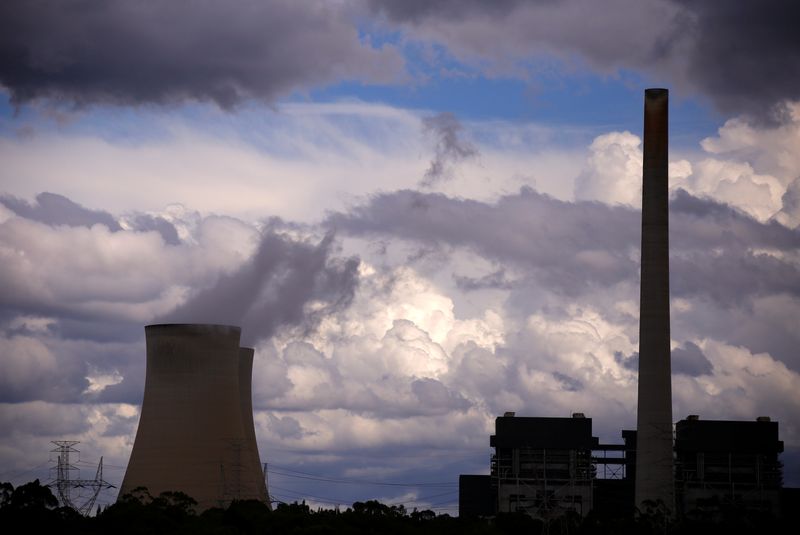By Clyde Russell
LAUNCESTON, Australia (Reuters) - The spot price of Australian thermal coal is higher than that of coking coal, an unprecedented situation that highlights just how the global market for the polluting fuel has been upended by Russia's invasion of Ukraine.
But while moves in the various spot prices tend to gather media headlines, it's worth noting that they cover only a tiny volume of the whole seaborne market for thermal coal, a fuel for power stations.
What are far more significant are annual contract prices agreed between Australian miners and Japanese utilities in an opaque process that sets the cost of thermal coal for much of Asia.
In effect, the spot price is the price of last resort, insofar as it is paid by only those buyers desperate to secure supplies at any cost.
The bulk of exports of thermal coal from Australia, the fuel's second-biggest shipper, behind Indonesia, are priced against annual contracts agreed between miners and Japanese utilities, which typically run from the start of the Japanese fiscal year on April 1.
The annual contract for Australian thermal coal that is most watched is the one between miner Glencore (OTC:GLNCY) and Japan's Tohoku Electric Power.
The two companies don't disclose details of the talks or the outcome, but the settlement price generally leaks out and is followed by much of the market for other deals.
So far this year it appears no agreement has been reached between Glencore and Tohoku, with the parties said by market watchers to be about $100 a tonne apart on what Glencore wants and Tohoku is prepared to pay.
Last year the contract was agreed at just under $110 a tonne, according to reports at the time, which was up from $68.75 for the 2020-21 fiscal year.
This year it's believed that Glencore initially wanted as much as $400 a tonne, while Tohoku was aiming for closer to $150, and negotiations so far have narrowed the gap but hardly closed it.
Assuming an agreement is eventually struck, the new price will certainly be a substantial hike from that of 2021-22, meaning power prices are likely to rise in Japan - and also in South Korea and Taiwan, which also use Australian thermal coal.
However, it's also likely that the price agreed will be some way short of current sky-high spot prices.
SPOT PRICES SURGE
There are several benchmarks for spot Australian thermal coal, with the main physical price being that assessed by globalCOAL.
Thermal coal at Australia's Newcastle port was assessed at $415.75 a tonne on Monday by globalCOAL, up 4.56% on the previous day.
However, globalCOAL also reported that there had been no physical trades so far this week, and last week saw only one cargo of 25,000 tonnes change hands on the company's platform.
Newcastle coal futures traded on ICE (NYSE:ICE) ended at $392.45 a tonne on Monday, down from $397 on June 24.
Monday's futures price was 10.8% below the record high of $440 reached on March 3, which came in the wake of Russia's Feb. 24 invasion of Ukraine. The war raised concerns about the future of shipments from Russia, the world's fourth-largest coal exporter.
The Monday price also means the ICE thermal coal contract is trading above Australian coking coal contracts in Singapore, which closed at $373.50 a tonne on Monday.
From the time Singapore Exchange (OTC:SPXCY) coking coal futures were launched in 2014, they traded at a premium to Newcastle ICE thermal coal contracts - until June 1 this year, when they moved to a discount.
Thermal coal gained 243% in the 12 months to June 1, outpacing a 155% rise in coking coal contracts.
Spot Australian Newcastle coal is also trading at about eight times the price of mid-2020, when prices had slumped amid the economic fallout from the initial outbreaks of the COVID-19 pandemic.
The price has reached its current elevated levels on the back of strong demand from Europe, which is turning to seaborne coal from South Africa and even as far away as Australia as it halts imports from Russia.

Power shortages in India and Japan, the world's second- and third-biggest coal importers, respectively, have also boosted demand and prices.
While there will be some deals done using the globalCOAL physical or ICE futures prices as a reference, this will be a small number compared to the cargoes priced against the annual contracts.